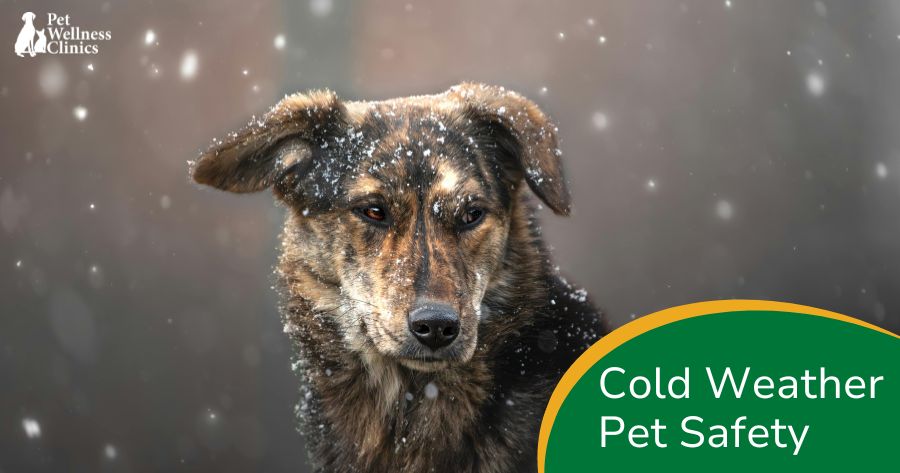
The threat of intestinal parasites is a reality for you and your pets. All pets are susceptible to parasites, whether inside or outside, young or old, sick or healthy. Disease caused by parasites will range from minor signs like stomach upset to severe cases of death. There are many different types of parasites that affect pets but the most common are hookworms, tapeworms, roundworms, and whipworms. The effects of these worms can vary depending on the severity and duration of the worm burden or the health and age of the pet. Parasites can be dormant in your pet’s system for quite some time before physical symptoms are evident. If your dog or cat is exhibiting random and rapid weight loss, diarrhea that is not resolving using diet changes, anemia, coughing, scooting, unexplained vomiting, or severe bad breath regardless of tooth brushing, then it is recommended you take your pet to a veterinarian; it is a very real possibility that your pet has some sort of parasitic infection.
Why is a stool sample required? There are only two types of parasites that may be easily visible by the human eye. However, waiting until they are identified in the feces or stuck to your pet’s fur, means your pet is already experiencing advanced stages of sickness. A stool sample may be able to identify adult worms, as well as microscopic eggs, shed more regularly in the stool early in the disease process.
Hookworms are also much more common in dogs and puppies, but can also infect cats and kittens. Hookworms secure themselves to the small intestines, sucking up blood for nourishment. Exposure to hookworms occurs via stool that has been contaminated by it or ingesting the eggs by other means. Puppies and kittens can also be exposed to the parasite by nursing on an infected mother. Due to the loss of blood, advanced stages of hookworm infestation tend to cause anemia. Poor weight, loss of interest in favorite foods and treats and low energy are all hallmarks of a hookworm infestation.
Tapeworms come from fleas, putting dogs and cats in danger. Tapeworms look like several pieces of tape secured together, with distinct tiny brick like sections. Although tapeworms can grow to 5 to 6 inches in length, the first visible signs of tapeworm infestations typically manifest in tiny segments attached to the fur around the pet’s anus. Looking like small pieces of rice, these tapeworm segments move when agitated, unless they are already dried. These segments contain tapeworm eggs. Tapeworm infestations tend to be aggressive. It is important that you visit a veterinarian as soon as possible to not only control the tapeworms but also start flea prevention to prevent reinfection.
Roundworms tend to affect kittens and puppies as well as adults, especially those living in close quarters. Pet shops, puppy mills, and shelters tend to be inundated with this parasite. Roundworms tend to be very common due to the way it is spread. The roundworm larva can migrate between the mother and a developing fetus. It is also spread during nursing. It will also be easily transmitted through contaminated feces contact. When the larvae migrate, they grow up to 5 inches in your pets’ intestines. There, they absorb nutrients from the intestinal tract and start laying eggs. Roundworms can lay up to 1 million eggs over the span of a couple of weeks. Due to this number, many kittens and puppies with advanced stages of infestation tend to have large bellies and midsections. Severe infestations can cause a blockage, killing the host.
Whipworms are parasites of dogs. The adults look like small pieces of thread, whipworms tend to occupy your pet’s intestine. Whipworms do not lay many eggs, so several stool samples need to be tested to determine if whipworms are the potential culprit. Extreme weight loss or production of stool that is encased in mucus is usually attributed to whipworm infestation. Fortunately, whipworms rarely cause deaths.
The key to improving your pets’ health and length of life expectancy is through prevention and avoidance of as many diseases as possible. Annual veterinary visits allow your veterinarian to find early signs of problems before they are severe or untreatable. As your pet ages, you should increase their visits to twice a year. Your veterinarian will prescribe dewormers to treat and prevent your dog or cat’s intestinal parasites. Use year-round flea prevention to reduce your pet’s exposure to fleas and thus tapeworms.
In many areas, the law requires pets to be vaccinated to allow access in dog parks or other places dogs congregate. Even though most pet owners comply, remember vaccines don’t prevent intestinal parasites and even a negative fecal sample may only mean the parasite wasn’t being shed at that time, not that the animal is negative for every parasite. Because of this, it is important to be able to identify symptoms to avoid exposure of your pet to a sick or shedding dog or cat. It’s especially important to avoid any pets that look particularly lethargic, dirty, or otherwise unhealthy since these are clues that there may be a parasite infection. It’s recommended you not allow your pets to wander in marshes or areas with tall grass. These places are breeding grounds for parasites and bacteria that can infect your pets. Outdoor cats are exposed to predators, unfriendly neighbors, cars, aggressive cats, and parasites. An indoor cat generally lives a much longer life than an outdoor cat. Consider converting your outdoor cats to the indoors to avoid these preventable dangers.
.png)

